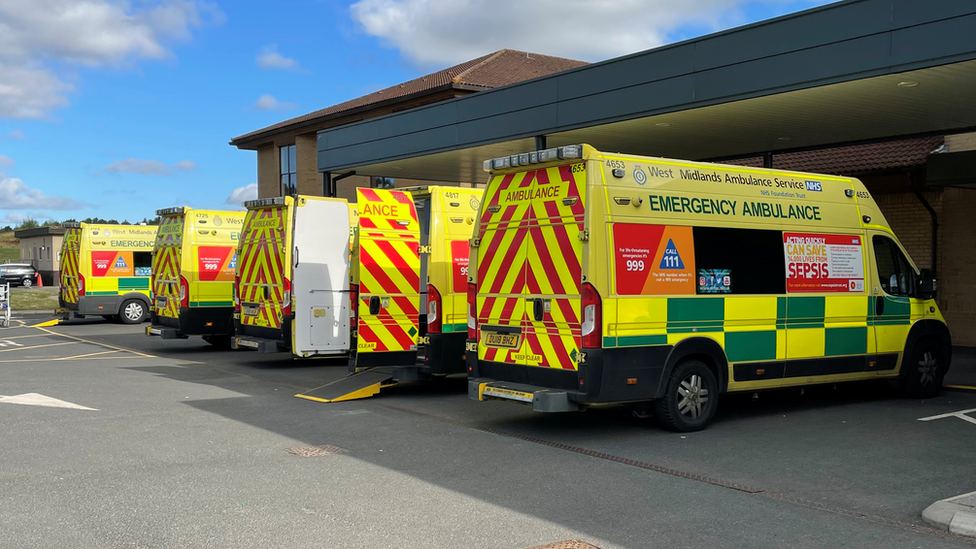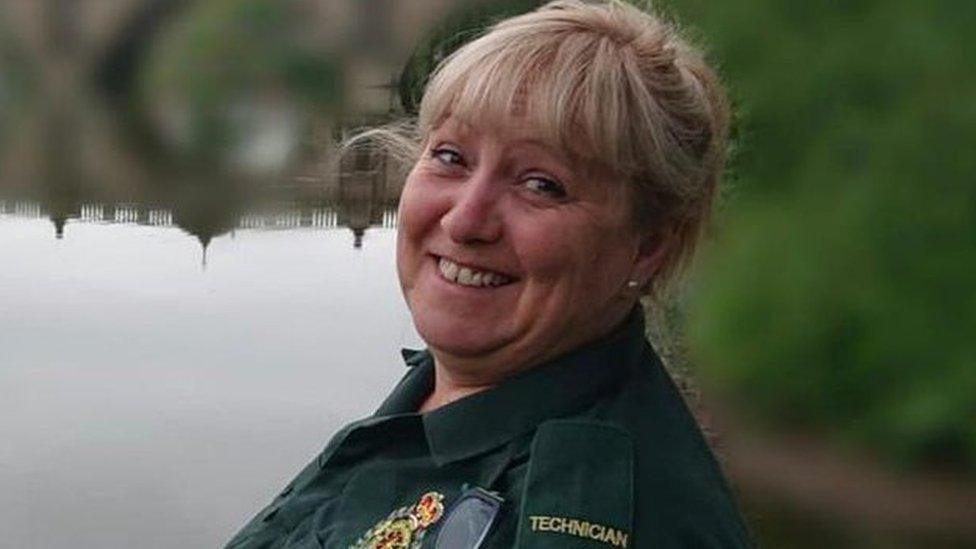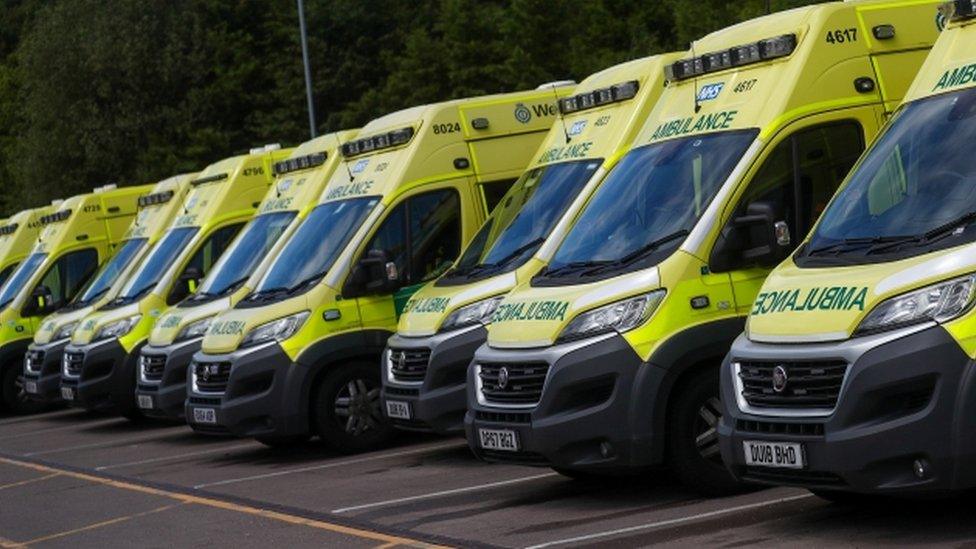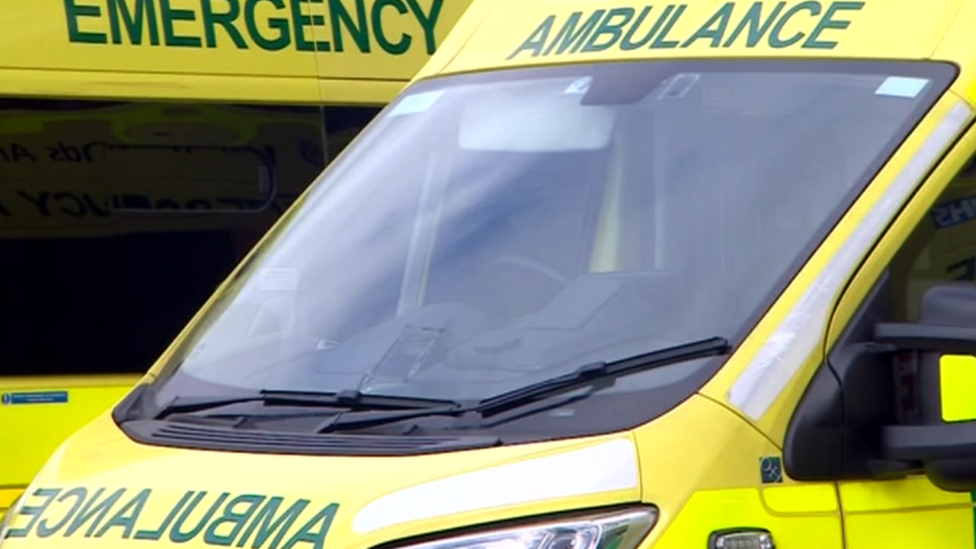Shropshire and Worcestershire: A&E ambulance delay plan
- Published

Many West Midlands ambulances are forced to wait for hours to hand over their patients at hospitals
A scheme to cut ambulance delays is to be introduced at hospitals in Shropshire and Worcestershire.
West Midlands Ambulance Service (WMAS) set up a trial initiative at three Birmingham hospitals in September in a bid to get patients out of ambulances quicker by way of a staffed holding area.
That freed up ambulances otherwise stuck at A&Es to respond to 999 calls.
WMAS said the scheme had already produced a "significant improvement".
Campaigners have cautiously welcomed the measure but say it does not tackle root causes of the problems.
Hospitals in Shropshire and Worcestershire have struggled with patient handover delays for a number of years.
A report, external, due to go before the WMAS Trust board, said there had been a "significant increase" in handover delays at the hospitals in Shrewsbury and Worcester, and in Stoke-on-Trent too.
Across the West Midlands in September 2019, the service lost a total of 6,259 hours through ambulances being stuck at hospitals waiting to hand over patients.
In September 2022, the equivalent figure was 36,750 hours.
WMAS said it had worked with hospital trusts in the region on a number of initiatives to free up ambulances, but the report said "the delays continue to deteriorate".
However, the scheme in Birmingham - at the Queen Elizabeth Hospital, Good Hope Hospital and Heartlands Hospital - was said to have delivered positive results.
As a result of the trials, WMAS said it had been approached earlier this month by the Shrewsbury and Telford Hospital Trust and the Worcester Acute Hospitals Trust, with similar schemes to now be set up at their sites.
It works by having a room set aside to receive the patients delivered by ambulances and allow crews to then be assigned other jobs.
Extra training
The so-called Ambulance Decision Areas are staffed by WMAS paramedics and healthcare assistants with extra training.
But the ambulance service warned should the provision become full, any inroads in tackling issues could be lost.
Health campaigner Gill George, from Shropshire Defend Our NHS, said the move was "very, very welcome" but only as a "stop-gap measure" as by itself it did not "create extra space in overcrowded A&Es".
She added: "It doesn't create extra hospital beds. It doesn't prevent 12-hour waits for a hospital bed."
'Significant improvement'
The WMAS report said training was still ongoing in Birmingham, but there had already been "a significant improvement in ambulance handover delays with further improvement expected as the areas become better staffed".
Michelle Brotherton, from the ambulance service, told BBC Radio Shropshire that if the new areas became full "then clearly we'll be back to square one".
But she added: "While the patients are in those areas, they are receiving appropriate treatment as well. So we're not just... caring for the patient, we're actually doing more than paramedics would do on the backs of an ambulance.
"Not all of our patients that we respond to go into hospital. So we have a conveyance rate of around 50%, which clearly is very good. So we're able to... treat people at home or signpost them to other areas."
Ms George said: "There were 23 ambulances allocated to Shropshire, 22 of those ambulances were stuck in queues outside the A&Es at Telford and Shrewsbury [this week]; complete gridlock, complete crisis.
"And the biggest single cause is actually the lack of social care packages, so people can't be discharged from hospital when they're ready to go."

Follow BBC West Midlands on Facebook, external, Twitter, external and Instagram, external. Send your story ideas to: newsonline.westmidlands@bbc.co.uk, external
Related topics
- Published13 October 2022

- Published13 July 2022

- Published9 June 2022

- Published18 January 2022
